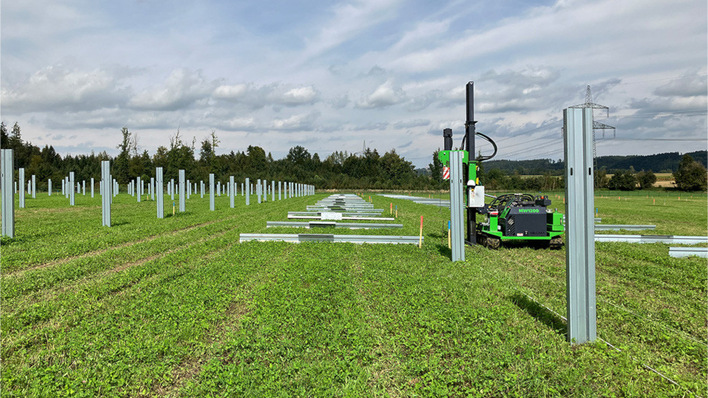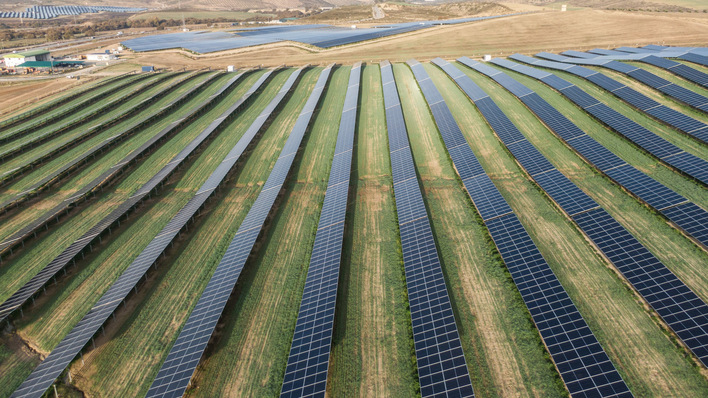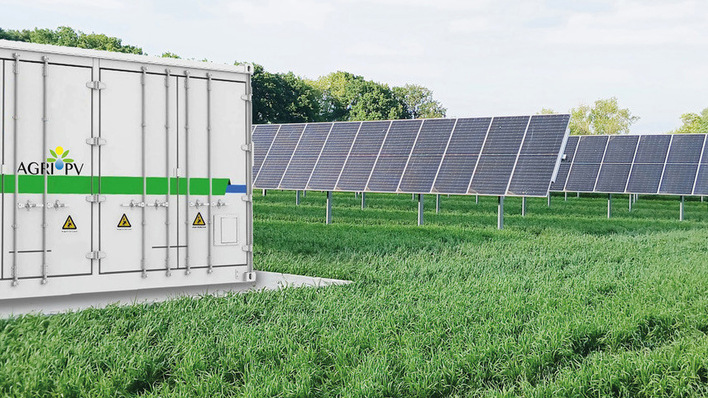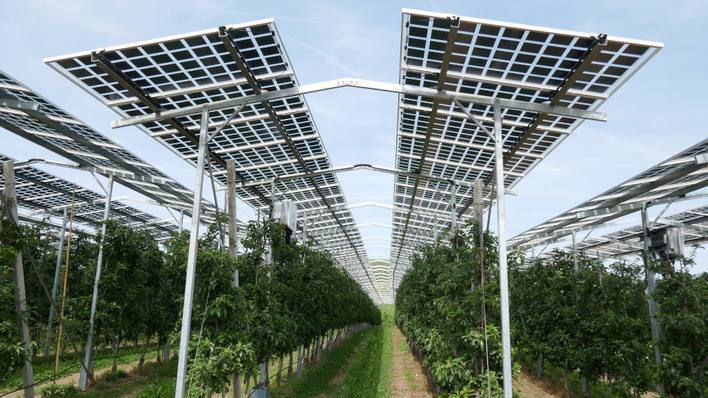Berry crop shelters were among the first agri-PV systems put into practice, offering several clear advantages. The modules reliably protect sensitive fruit from severe weather, giving growers peace of mind during hail or thunderstorms. In most cases, these modules take the place of conventional plastic film covers.
Yet for much of the growing season, the modules also cast shade. Jocelyn Widmer of Agroscope in Switzerland has investigated how this shading affects berry yields and fruit quality. His team at the Institute for Agricultural, Food and Environmental Research carried out scientific monitoring of agri-PV installations at three Swiss farms.
Mirroring real-world agricultural practice
Widmer’s team analysed both yield and fruit quality under agri-PV modules and conventional plastic tunnels, with a focus on the daily light integral (DLI). The DLI measures the daily amount of photosynthetically active light, in moles, that reaches each square metre. “We are comparing agri-PV with the typical production methods used by Swiss farmers,” Widmer says. “Our aim is to replace existing structures with agri-PV solutions, not to introduce entirely new systems. That’s why our comparisons always involve covered approaches.”
Three locations examined
The research sites are located in different regions of Switzerland. One 2,000-square-metre plantation is in the Berner Seeland near the Swiss capital, while a second site, spanning over 4,000 square metres, is in southern Switzerland.
How Agri-PV supports regenerative and sustainable agriculture
At both sites, farmers grow several strawberry varieties alongside different types of raspberries. The third installation, located in the Luzerner Seetal southwest of Zurich, features raspberries grown across a 7,400-square-metre area, meeting the standards for organic farming.
More light provides more yield
Jocelyn Widmer shared the findings at this year’s Agrovoltaics World Conference, organised by the Fraunhofer Institute for Solar Energy Systems (ISE). The studies revealed that light availability plays a key role in agricultural yields. The research confirmed a clear trend: the more light plants receive, the more berries they produce. This effect was, as expected, more pronounced in strawberries than in raspberries.
Less light means less sugar
The picture was different, however, when it came to fruit weight. Each individual berry weighed the same, regardless of light conditions. The researchers also found no correlation with acidity levels. In contrast, sugar content declined as shading from the solar modules increased. “Less light meant less sugar,” says Jocelyn Widmer, highlighting another key quality factor. “As for berry firmness, we observed no impact in raspberries. In strawberries, however, less light resulted in softer fruit, which may be linked to the lower levels of solar radiation.”
Fraunhofer ISE algorithm balances crop growth and solar efficiency
Ensuring adequate light
Overall, and as expected, strawberries are much more sensitive to shading than raspberries. “We found a strong relationship between DLI, yield and sugar content in strawberries. For stable yields, strawberries should receive at least 25 moles per day per square metre. Raspberries, on the other hand, tolerate shading better. Some yield reductions are possible, but the system can be optimised. Here, we recommend a DLI of at least 15 moles per day per square metre,” Widmer concludes.
With these light exposure guidelines, agri-PV systems could in future be installed above both strawberry and raspberry crops. One key finding from the researchers: raspberry yields are higher under any form of protective covering—whether solar modules or a plastic film roof—than in open fields without cover. This also applies to the average fruit weight. (su)









